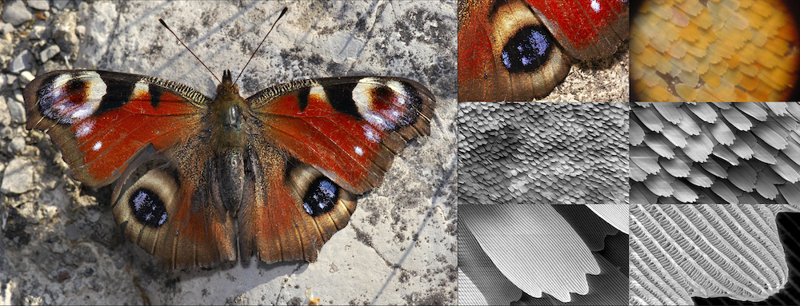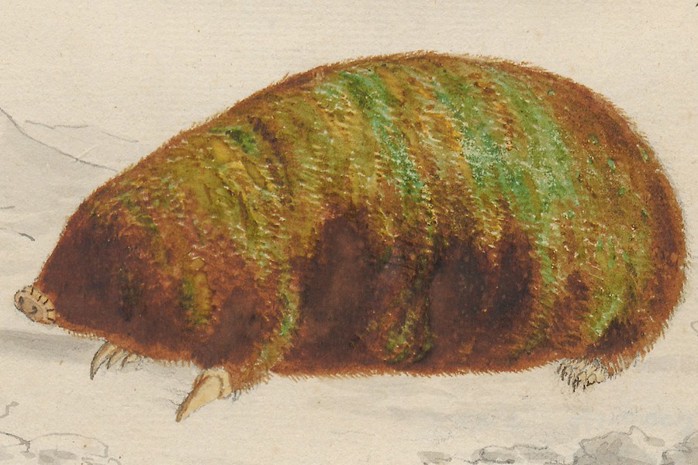
Is it possible for humans to evolve “weird” colored hair (like green, blue, or purple)?

- Related Topics:
- Hair color,
- Pigmentation traits,
- Quirky questions,
- Animal biology,
- Futuristic science
A curious adult from Florida asks:
Like blond and red hair, is it possible that another genetic mutation will occur in humans' evolution that would give them weird colored hair, like green, blue, purple, etc.?
This question has been on my mind for a bit. Personally, I believe there is a way a genetic mutation can cause new hair colors to be discovered due to the particular reason that we still don’t know much about the human body, let alone about the human brain and genes/DNA. Also I do believe blue and green pigments exist in nature so I think the answer to my question would be yes.
While there are many striking examples of beautiful and bright colors in nature, most of them probably won’t end up in our hair.
Disappointing, I know.
But I think the reasons why we probably won’t evolve blue or green hair are fascinating. Let’s take a journey through some chemistry, physics, and genetics to figure out why!
What gives hair its color?
Hair gets its color from a pigment called melanin. Melanin is a pigment produced by your body that dyes each individual strand of hair. It’s also responsible for the color of your skin and eyes.
Melanin comes in two types: dark eumelanin and lighter pheomelanin. How much of each type you have determines your hair color. For example, if you produce a lot of eumelanin, your hair will be black or brown. On the other hand, if you produce mostly pheomelanin, your hair will be blonde or auburn. If you don’t produce any melanin, your hair will be gray or white.
We aren’t the only species to rely on melanin for color. Melanin also gives animals’ fur its color. So if you take a look at the wide range of fur colors in nature, you can start to get an idea of what colors melanin can make.

Why does hair only come in certain colors?
If you take a look at the hair colors naturally found in people and other mammals, you may notice a lot of black, brown, yellow, and red colors. But nothing in the green or blue range.
So why is that?
What color something is depends on what kinds of light it absorbs and reflects. An apple appears red to us because its skin absorbs everything except for red light. That red light bounces back off and can be seen by our eyes.
Melanins are really good at absorbing everything except brown and yellow light. (Well, technically there is no such thing as “brown light”.) Small differences in the chemical structure of melanin can affect exactly which colors of light it absorbs. Eumelanin and pheomelanin have slightly different chemical structures. This causes them to absorb slightly different light, making them have different colors.
Melanin isn’t the only thing that adds color to our bodies. For example, the red of our blood can turn our cheeks pink when we blush. And compounds created by breaking down blood cause the greens and yellows found in a healing bruise. But these kinds of compounds aren’t naturally found in our hair.
It might seem like evolution could just tweak the chemical structure of the melanin in our hair and change its color. But unfortunately, melanin would probably have to change a lot to get out of the brown color range. It’s unlikely that small changes could make melanin look drastically different.
We also know that melanin production is really complicated! Scientists know of at least 11 genes that contribute to hair coloration in humans. Since this is such an intricate process, getting a big change in the melanin structure would probably require mutations in many genes. That’s pretty unlikely to happen by chance.
Plus, changing the structure of melanin might have unintended consequences. The melanin in our hair, skin, and eyes protects against the harmful effects of UV light. Melanin is also required for our eyes to work properly. People without any melanin often have problems with their eyesight. So even if we could evolve changes in melanin color, it’s unclear whether our bodies would still function the same.
But why can’t you get other colors?
But wait, I just said melanin is also found in eyes! If eyes can be blue, why can’t hair? This is a great question, and the answer is kind of paradoxical: it turns out that there isn’t any blue pigment in blue eyes!
Instead, the way that the iris is built on a microscopic level means it can only reflect blue light. This is why blue eyes can seem to shift in color depending on the lighting conditions. This is also very related to why the sky is blue. There isn’t any blue pigment floating around in the atmosphere. But blue light still bounces off the air molecules and hits our eyes.
This phenomenon is called structural color. This kind of color is caused by the microscopic arrangement of molecules, instead of any intrinsic pigments.

Lots of things in nature take advantage of structural color to turn themselves brilliant colors. Some animals can build tiny wells that trap certain colors of light. The patterns on peacock feathers and butterfly wings are both caused by structural color. So too is the brilliant blue of the marble berry.
Some mammals also use structural color to achieve new fur colors. The golden mole, a blind mammal that lives in Africa, uses structural color to achieve its iridescent golden fur. So maybe someday we could evolve shimmering hair like them!

But sadly, new bright colors like blue or green are unlikely for us. At least we can keep using dyes to get fun hair colors!
Read More:
- The genetics of hair color.
- There is no such thing as brown light.
- The brightest berry in the world encourages animals to eat it, even though it has no nutritional value.
- What causes the blue in a morpho butterfly’s wings?
- Why would a blind animal have iridescent fur?
- Structural color is also responsible for nature’s favorite blue butt.
- Some animals get help from algae and other organisms for color and camouflage.

Ben Doughty
When this answer was published in 2023, Ben was a Ph.D. candidate in the Department of Genetics, studying the single-molecule basis of transcription in William Greenleaf’s laboratory. He wrote this answer while participating in the Stanford at The Tech program.
 Skip Navigation
Skip Navigation
